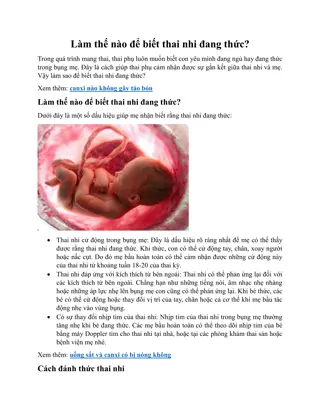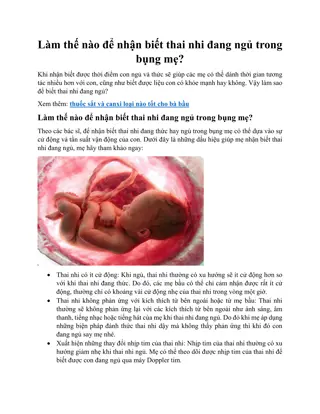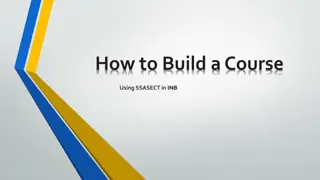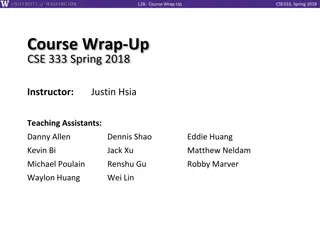Umple Mini-Course Part 2: Building on the Basics
This mini-course delves into advanced concepts in Umple, covering derived attributes, multi-valued attributes, keys, singleton pattern, delegation pattern, and basic constraints. Examples and images illustrate each concept, providing a comprehensive understanding for learners. The course emphasizes practical application and modeling techniques to build robust systems.
Download Presentation

Please find below an Image/Link to download the presentation.
The content on the website is provided AS IS for your information and personal use only. It may not be sold, licensed, or shared on other websites without obtaining consent from the author.If you encounter any issues during the download, it is possible that the publisher has removed the file from their server.
You are allowed to download the files provided on this website for personal or commercial use, subject to the condition that they are used lawfully. All files are the property of their respective owners.
The content on the website is provided AS IS for your information and personal use only. It may not be sold, licensed, or shared on other websites without obtaining consent from the author.
E N D
Presentation Transcript
Umple Mini-Course Part 2: Building On the Basics Timothy C. Lethbridge, I.S.P, P.Eng. University of Ottawa, Canada tcl@eecs.uottawa.ca http://www.umple.org
Derived attributes These generate a get method that is calculated. class Point { // Cartesian coordinates Float x; Float y; // Polar coordinates Float rho = {Math.sqrt(Math.pow(getX(), 2) + Math.pow(getY(), 2))} Float theta = {Math.toDegrees(Math.atan2(getY(),getX()))} } Umple Mini-Course Part 2: Building on The Basics 2
Multi-Valued Attributes Limit their use. Associations are generally better. class Office { Integer number; Phone[] installedTelephones; } class Phone { String digits; String callerID; } Umple Mini-Course Part 2: Building on The Basics 3
Keys Enable Umple to generate an equals() and a hashcode() method class Student { Integer id; name; key { id } } The user manual has a sports team example showing keys on associations too Note how this feature is not inherited from UML Umple Mini-Course Part 2: Building on The Basics 4
Singleton Pattern Standard pattern to enable only a single instance of a class to be created. private constructor getInstance() method Declaring in Umple class University { singleton; name; } Umple Mini-Course Part 2: Building on The Basics 5
Delegation Pattern A class calls a method in its neighbour class RegularFlight { flightNumber; } Class SpecificFlight { * -- 1 RegularFlight; flightNumber = {getRegularFlight().getFullNumber()} } Full details of this example in the user manual Umple Mini-Course Part 2: Building on The Basics 6
Basic Constraints Shown in square brackets Code is added to the constructor and the set method class X { Integer i; [! (i == 10)] } We will see constraints later in state machines Umple Mini-Course Part 2: Building on The Basics 7
Skip the ahead to slides on state machines if time is short: Students read this at home Tips for Building a Model from Requirements Identify a first set of candidate classes Focus on the core 1-2 classes Add associations and attributes Find generalizations and apply patterns as needed Iterate for the other classes Then work on methods Iterate until the model is satisfactory Umple Mini-Course Part 2: Building on The Basics 8
Discovering Classes in Requirements Look at a source material such as a description of requirements Extract the nouns and noun phrases Eliminate nouns that: are redundant (same meaning) represent instances (e.g. specific people) are vague or highly general (e.g. Object ) not needed in the application Pay attention to classes in a domain model that represent types of users or other actors They may or may not be needed Umple Mini-Course Part 2: Building on The Basics 9
Identifying Associations and Attributes Start with classes you think are most central and important Decide on the clear and obvious data it must contain and its relationships to other classes. Work outwards towards the classes that are less important. Avoid adding too many associations and attributes to a class A system is simpler if it manipulates less information Umple Mini-Course Part 2: Building on The Basics 10
Tips about identifying and specifying valid associations Specify the multiplicity at both ends Use role names if necessary Umple Mini-Course Part 2: Building on The Basics 11
Actions versus associations A common mistake: to represent actions as if they were associations Better: The borrowoperation creates a Loan, and the returnoperation sets the returnedDate attribute. Bad, due to the use of associations that are actions Umple Mini-Course Part 2: Building on The Basics 12
Tips About Identifying valid attributes It is not good to have many duplicate attributes If a subset of a class s attributes form a coherent group, then create a distinct class containing these attributes Umple Mini-Course Part 2: Building on The Basics 13
Time for test 3 Click on the following link for Test 3 https://www.surveymonkey.com/r/Test3x-UmpleIsrael Umple Mini-Course Part 2: Building on The Basics 14
Basics of State Machines At any given point in time, the system is in one state. It will remain in this state until an event occurs that causes it to change state. A state is represented by a rounded rectangle containing the name of the state. Special states: A black circle represents the start state A circle with a ring around it represents an end state Umple Mini-Course Part 2: Building on The Basics 15
Garage Door State Machine class GarageDoor{ status { Open { buttonOrObstacle -> Closing; } Closing { buttonOrObstacle -> Opening; reachBottom -> Closed; } Closed { buttonOrObstacle -> Opening; } Opening { buttonOrObstacle -> HalfOpen; reachTop -> Open; } HalfOpen { buttonOrObstacle -> Opening; } } } Umple Mini-Course Part 2: Building on The Basics 16
Events An occurrence that may trigger a change of state Modeled in Umple as generated methods that can be called Several states may be able to respond to the same event Umple Mini-Course Part 2: Building on The Basics 17
Transitions A change of state in response to an event. It is considered to occur instantaneously. The label on each transition is the event that causes the change of state. Umple Mini-Course Part 2: Building on The Basics 18
State Diagrams an Example with Conditional Transitions Umple Mini-Course Part 2: Building on The Basics 19
Actions in State Diagrams An action is a block of code that must be executed effectivey instantaneously When a particular transition is taken, Upon entry into a particular state, or Upon exit from a particular state An action should consume no noticeable amount of time Umple Mini-Course Part 2: Building on The Basics 20
State Machine for a Phone Line Umple Mini-Course Part 2: Building on The Basics 21
Umple for the Phone Line example class phone { state { onHook { startDialing -> dialling; incomingCall -> ringing; } ringing { pickUp -> communicating; otherPartyHangUp -> onHook; } communicating { hangUp -> onHook; otherPartyHangUp -> waitForHook; putOnHold -> onHold; } onHold { hangUp -> onHook; otherPartyHangUp -> waitForHook; takeOffHold -> communicating; } dialing { completeNumber -> waitingForConnection; hangUp -> onHook; } waitingForConnection { otherPartyPickUp -> communicating; hangUp -> onHook; timeOut -> onHook; } waitForHook { hangUp -> onHook; } } } Umple Mini-Course Part 2: Building on The Basics 22
In-Class Modeling Exercise Microwave oven system state machine Events include buttons, door opening, door closing, timer ending, etc. Umple Mini-Course Part 2: Building on The Basics 23
Homework System for negotiating major work task for after lecture 2 This system is to be used by negotiators, and mediators who are negotiating contracts. A contract has a list of sections, each with a number, e.g. 1. A section has a list of clauses, each with a second-level number, e.g. 2.4 A clause may have sub-clauses (and possibly even sub-sub- clauses) which may have numbers or letters too. We will call sections, clauses, and sub- clauses items . An item may have a title and always has some text.. Negotiation is done in a series of rounds each of which has a start date and time. The groups negotiating are called parties . There are always two parties. At each round, each party may present some or all of the following a) Propose a set of changes (including re-proposing changes that were rejected/withdrawn) b) Agree to some set of changes that were previously proposed by the other party c) Reject some set of changes that were previously proposed by the other party d) Withdraw their own previous proposed changes that have not yet been accepted Umple Mini-Course Part 2: Building on The Basics 24
Negotiating System - 2 A change may be i. ii. A modification to an item Adding a new item. If a new item is proposed to be added it must be proposed to be inserted after a specific existing item, or as a subitem of an existing item, otherwise it goes at the end. Deleting an existing item. iii. Negotiations go through the following states: They are initiated when there is agreement to negotiate and the names of the people doing negotiating are entered in the system. Negotiations are underway when there are outstanding proposals that remain proposed (have not been accepted or withdrawn ). Negotiations reach stalemate when there is no difference made after a negotiating round, or all proposals are rejected . Negotiations are complete when all proposals are either accepted or withdrawn (i.e. there are no outstanding rejected or proposed changes). Umple Mini-Course Part 2: Building on The Basics 25
Negotiating System - 3 A simple text reader can be used to read in the input. E.g. To propose adding a first item at the beginning P 0 First item The system would return a change id that could be used later for agreeing, rejecting and withdrawing -> C1 To agree to C! A C1 To display the current agreed contract D To display the current proposed changes C Extension to the system: A meditator can also propose changes or withdraw their own proposed changes. A change proposed by a mediator must be accepted by both parties to be fully accepted . Umple Mini-Course Part 2: Building on The Basics 26
How to Submit Your Negotiating System Add any necessary extra requirements or assumptions and document them as a text file Write the Umple code and compile it Get it to compile cleanly even if it doesn t fully run Get as far as you can Put your name on files (as code comments) Generate a graphviz class and state diagram and save as files too Create a zip file with: Umple code + diagrams + text file Submit to the following link: http://bit.ly/2qqUYyK or https://www.dropbox.com/request/8cufWRaHStMjKWVQr6LV Umple Mini-Course Part 2: Building on The Basics 27
Do Activities and Concurrency A do activity executes In a separate thread Until Its method terminates, or The state needs to exit (killing the tread) Example uses: Outputting a stream (e.g. playing music) Monitoring something Running a motor while in the state Achieving concurrency, using multiple do activities Umple Mini-Course Part 4: Using the Full Power of Umple 28
Active Objects These start in a separate thread as they are instantiated. Declared with the keyword active Umple Mini-Course Part 4: Using the Full Power of Umple 29
Default Threading in State Machines As discussed so far, code generated for state machines has the following behaviour: A single thread: Calls an event Executes the event (running any actions) Returns to the caller and continues This has two problems: 1. If another thread calls the event at the same time they will interfere 2. There can be deadlocks if an action itself triggers an event Umple Mini-Course Part 4: Using the Full Power of 30 Umple
Queued State Machines Solve the threading problem: Callers can add events to a queue without blocking A separate thread takes items off the queue as fast as it can and processes them Umple syntax: queued before the state machine declaration We will look at examples in the manual Umple Mini-Course Part 4: Using the Full Power of Umple 31
The Course Continues in Part 3 We will look at More advanced associations Separation of concerns using mixins, aspects and traits Generation of text using templates Nested state machines Auto and timed transitions Events with parameters State tables and simulations Pooling and queuing State machines in traits Database and Formal method generation Umple in Itself Umple Mini-Course Part 2: Building on The Basics 32























